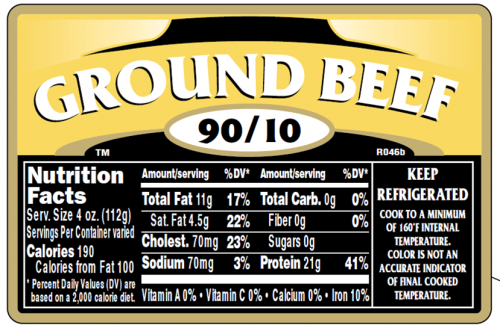USDA’s guidance on meat labeling: still voluntary, alas.
The USDA announces updated guidelines for substantiating claims on meat and poultry labels in these categories.
- Animal Welfare Claims
- Breed Claims
- Diet Claims
- Living or Raising Conditions Claims
- Negative Antibiotic Use Claims
- Negative Hormone Use Claims
- Source and Traceability Claims
- Organic Claims
- Environment-Related Claims
It says:
Animal-raising claims, such as “Raised Without Antibiotics,” “Grass-Fed” and Free-Range,” and environment-related claims, such as “Raised using Regenerative Agriculture Practices” and “Climate-Friendly,” are voluntary marketing claims that highlight certain aspects of how the source animals for meat and poultry products are raised or how the producer maintains or improves the land or otherwise implements environmentally sustainable practices…FSIS [USDA’s Food Safety and Inspection Service] last updated its guideline on these claims in 2019.
USDA’s new guidance says it “strongly encourages”
- The use of third-party certification to substantiate animal-raising or environment-related claims
- Substantiating “no antibiotics” claims by testing for antibiotics or using a third-party certifier who does the testing
- Providing data on soil or air quality studies to substantiate environmental claims
Comment
This guidance is voluntary.
This raises immediate questions about the antibiotic claim. A study conducted by researchers and policy experts at George Washington University found 20% of cattle marketed as “raised without antibiotics” to have been treated with antibiotics.
You would think that fixing this situation requires mandatory regulation, not voluntary.
Groups concerned about animal welfare also object. The Animal Welfare Institute wants stronger standards.
The ASPCA issued a press release: “ASPCA Condemns Long-Awaited USDA Guidelines that Fail to Meaningfully Improve Oversight of Animal Welfare Label Claims”
ASPCA’s labeling guide points out that claims for cage-free, humane-raised, and pasture-fed, for example,
which often appear on the packaging of meat, egg and dairy products, may indicate better animal welfare but lack strong standards and have no on-farm verification processes, meaning farm conditions and the treatment of animals vary widely across producers.
Voluntary means that producers can voluntarily ignore such guidelines. Plenty of evidence suggests that many do.
We need a better system.


